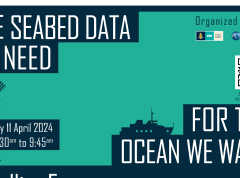Search results
There are 1104 results for “” in All
S-130PT5
5th Meeting of S-130 Project Team 13 ~ 14 March 2023 / VTC (13:00 - 15:00/ UTC+1,CET)
MSDIWG15 (2024)
15th MEETING OF THE IHO MARINE SPATIAL DATA INFRASTRUCTURES WORKING GROUP (MSDIWG15) Bali, Indonesia (4 March to 8 March 2024) (including joint sessions with the UN Working Group on Marine Geospatial Information and the OGC Marine DWG)
MSDIWG13 (2022)
13th MEETING OF THE IHO MARINE SPATIAL DATA INFRASTRUCTURES WORKING GROUP (MSDIWG13) Hybrid, Singapore (9 to 13 May 2022) (including joint sessions with the UN Working Group on Marine Geospatial Information and the OGC Marine DWG) In-person participation encouraged
S-100WG VTC (2020)
S-100WG VTC Meetings 2020 Online Meeting
ENCWG7 (2022)
7th ENC Standards Maintenance Working Group Meeting (ENCWG7) Wellington, New Zealand 21-25 November 2022 In conjunction with the 9th S-101 Project Team Meeting Meeting registration here Meeting Link
Seabed data to be discussed at the Ocean Decade Conference
The IHO and the OECD are co-hosting a satellite event during the UN Ocean Decade conference in Barcelona. Entitled "The Seabed Data We Need for the Ocean We Want," this session aims to look at the importance of advancing our understanding of the ocean and fostering increased investment in related activities.

Meetings
List of NIPWG Meetings
Alumni Workshop (2023)
Catégorie "A" Alumni Workshop 12 - 14 September 2023 Busan, Republic of Korea
Basic ECS PT Documents
Electronic Chart System Project Team



